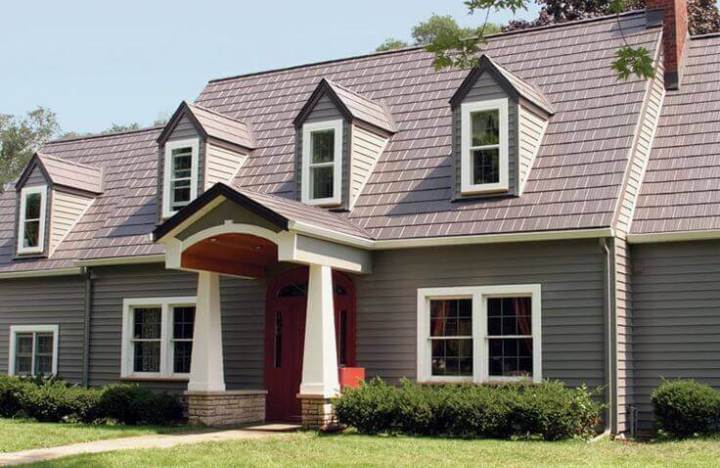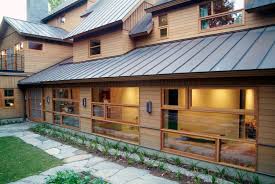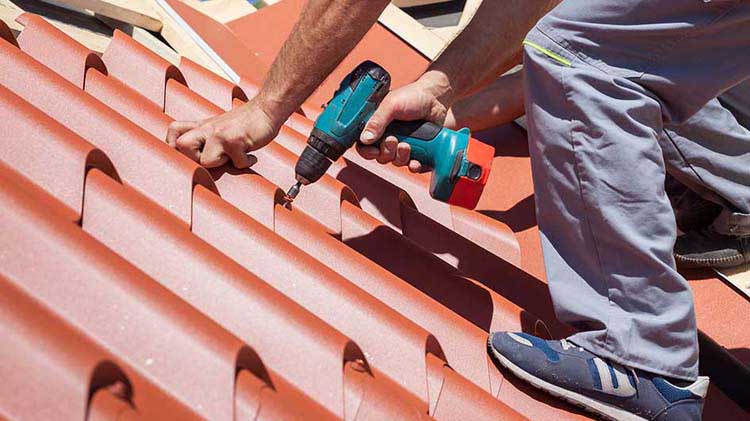Metal Roofing – Get The Facts!
Metal roofing has become a good option for all homes excluding those with very flat roof pitches. It is important to note that now shingle-style metal roofing products are indistinguishable from the traditional asphalt shingle roofs. If you are a person who wants to know about the metal roofing, then below are the twelve facts that you need to know:
1-Install It on Existing Roofs
Yes, you heard it right! You can install the metal roofing on the existing roof without tearing off the singles. Remember that the shingle removal is a preferred but tear-off is messy and raises the cost of the job as well. One of the big problems with this installation is trapped water vapor. If it stays trapped between the old roofing and metal roofing, then this leads to rot and mold. But this problem can be removed by installing a vented metal roof. The second option is that you can install new metal roofing over the furring strips (1 x 3s or similar) and it will raise metal to provide a ventilating air pocket between the layers. Remember that you should check local building codes before you are going to install a metal roof directly on the old shingles.
2-Does Not Attract Lightning
The majority of the people think that it may attract lightning but that’s not true. According to a technical bulletin by Metal Construction Association, it is said that metal roofing does not increase the risk of lightning strikes. Note that if metal roofing will be struck by lightning, then remember that this is less combustible in comparison to conventional roofing materials like wood shakes or shingles. According to the bulletin, metal roofing is an electrical conductor and noncombustible material, this makes it desirable construction available during lightning.
3-Energy-Efficient Option
According to studies, a metal roof will reflect solar radiant heat that will be reducing the cooling cost by 10 to 25 percent. In areas, where the cooling cost is more than the heating cost, they should add a shiny and granular coating on a metal roof to increase the reflective capacity of the roof. You will see a clear difference in energy savings of metal roof vs. asphalt shingles.
4-Cost-Effective Option
The metal roofing will carry warranties in comparison to the best asphalt shingles that last for 30 years. On the other hand, metal roofing will last 50 years or more. According to other statistics, it may last for 40 to 70 years. So, there is very little chance that a homeowner has to install more than one metal roof during his life. Remember that the metal roofing installation cost is more as compared to asphalt roofing but it will save your money in the long run.
5-It’s A Viable Option
In the past, you will see metal roofing on a high-end architect-designed home but now that’s not the case. You will see metal roofing in conventional houses as well. All the credit goes to the better manufacturing process and increased availability. As per the industry statistics, market share for metal roofing has increased at the rate of 3 percent every year in the past few years. You may be surprised to know that now 15% of all the roofing installation uses the metal roofing materials. To get metal roof installed, you should contact Corey & Corey to hire their expert roofing contractors Cape Cod. They will properly install the roof using proper tools and advanced techniques to provide you satisfactory results.

Metal roofs are loud
40% of respondents said that a metal roof may be too noisy.
Fact: While it may come as a surprise to many homeowners, a metal roof can be even quieter than asphalt shingles. Contrary to popular belief, metal panels or shingles are not loud at all!
An aluminum or steel roof has solid sheathing attached to the underlayment that actually helps silence the noise from rain, hail, falling branches and other weather conditions, better than other types of materials. So you do not ever have to worry about waking up to the sound of rain!
This misconception may come from people being in barns or industrial warehouses that have tin roofs. Indeed these roofs are good conductors of noise, but that is because very thin sheet metal is used and there is no insulation.
Since residential metal roofing adheres to much higher construction standards, there is no reason to compare it to these barn roofs and worry that they will be just as loud.

Pros and cons of metal roofs for your home
Advantages of metal roofs
- Longevity. Metal roofs can last 40-70 years, depending on the material. Traditional asphalt roofing materials have an estimated life expectancy of roughly 12-20 years.
- Durability. Some metal roofs can sustain wind gusts up to 140 miles per hour, will not corrode or crack, and may be impact-resistant (depending on which metal you choose). In addition, metal roofs don’t need the periodic costly maintenance that other roofing materials often require. However, they should be inspected periodically to make sure no repairs are required.
- Safety. Metal roofs will not spark and ignite into flames during a wildfire or lightning strike.
- Energy efficiency. Metal roofs reflect solar radiant heat, which can reduce cooling costs by 10-25%.
- Environmentally friendly. Metal roofs not only have 25-95% recycled content, depending on the material used, but are also 100% recyclable at the end of their life as a roof. In contrast, most shingle tear-off waste ends up as part of the building-related waste stream — up to 20 billion pounds per year.
Disadvantages of metal roofs
Despite their many advantages, metal roofs have some potential drawbacks.
- Affordability. Metal roofs can be as much as two or three times more expensive than other roofing materials. While the life of a metal roof is much longer, investing in a metal roof only makes sense if you plan to stay in your home long enough to enjoy the cost benefits.
- Noisiness. Metal roofs can be noisy, especially during a heavy rain or hailstorm. Adding more insulation during installation usually solves this problem, but that may increase costs.
- Expansion and contraction. Metal roofing materials that are attached as large panels tend to expand and contract. If they are not properly installed with fasteners that allow the metal to “breathe,” the panels may loosen.
- Inconsistency of color match. If a repair is required or a home extension is added years later, it may be difficult to find an exact match to the existing metal.
- Performance. If water accumulates anywhere on the roof because of poor-quality installation or repair, it can eventually cause serious damage. Low-grade metals may also be thinner and less durable. Some metals rust in certain climates or dent more easily than others during hailstorms or installation.

How to Get a Wireless Internet Signal in a Home With a Metal Roof
Metal objects can cause major wireless Internet disruption, so if you have a house with a metal roof you may need to take extra steps to ensure that your wireless Internet signal is as strong as it possibly could be. You want to avoid dead signal zones in the house where you are unable to get wireless Internet at all. You can adjust your modem and router in order to get in the best position for a signal.
Step 1
Purchase a wireless router with as long a range as possible. Metal roofing significantly decreases the signal strength of a wireless network in many cases, so you’ll want to start with the most powerful hardware possible
Step 2
Keep any metal objects within the home as far away from the router as possible. Situate the router so it is off of the ground, and ideally near a window to escape some of the metal roof interference.
Step 3
Use a wireless repeater to strengthen the wireless signal as you go through your home. The wireless repeater will also extend the effective range of your wireless network, although it will not have as great of an effect as it should, due to the metal roof.
Step 4
Move all of your computers to be within line of sight of the wireless router, if possible.
When you ask the question about the heat absorbancy of metal, there are a number of variables to consider:
- First, both the color and finish of the metal affects its heat absorbancy. Metal exposed directly to the sun will certainly heat up, but whether or not it heats up more or less than other roofing materials has to do with the color and finish. The Energy Star finishes that most of our metal roof products use are certified to be reflective of sunlight and therefore cooler than the older finishes. And a pale color will absorb less heat than a dark color.
- While it’s true that a metal roof will absorb heat when directly exposed to the sun, the same is true of any roof covering material. A dark colored roof in either asphalt, ceramic, slate or any other material will absorb heat at roughly the same rate. It’s unlikely that using the same color in differing material will result in a significant roof top temperature difference.
- Once the sun stops striking a roof directly, the lightest material will lose its heat fastest. The lightest roof available is metal, so it cools quickest. Once the sun stops shining on a metal roof, it quickly reverts to the same temperature as the surrounding air. With heavier materials like slate or concrete, their mass means they will retain heat much longer. The longer they stay hot, the more heat they’ll transfer to the building beneath. In terms of roofing materials contributing to heat in a building, once the sun stops shining, metal is the best possible option.